Contributed by Deacon Steve Herrera, Notre Dame San Jose High School
Four Shinnyo-en Buddhists, one Zoroastrian, and five Catholics embarked on an interfaith journey from June 24 to 29, 2024, in New Mexico, sponsored by Shinnyo-en Foundation in partnership with Notre Dame San Jose High School, California. We visited various places of worship and met religious leaders at the Sikh Gurdwara, a Jewish Synagogue, a historic Catholic Church and various others. In addition, the group visited Santa Clara, Taos and Acoma pueblos and learned about their indigenous cultures. Each evening there were one-on-one conversations and the teens shared their faith traditions with one another. As the week-long Teen Interfaith New Mexico Immersion Program unfolded the ten teenagers, who began as strangers, became life-long friends.
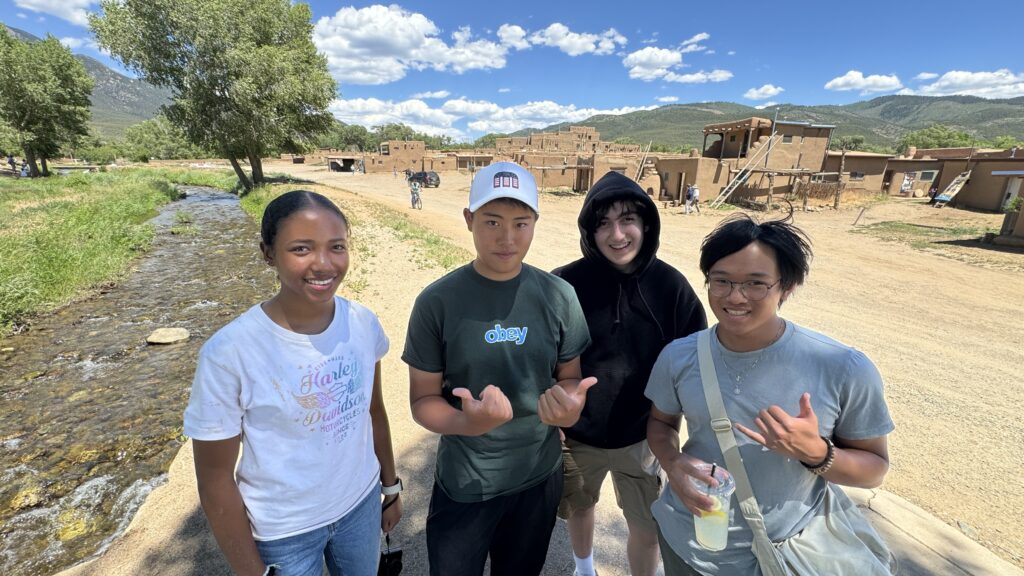
On Tuesday, June 25th, the group traveled from Santa Fe to St. Francis de Asis Church in Taos, which is a National Historic Landmark, and is an incredibly beautiful adobe church built in the early 1800s. The Church is made out of mud, straw, and sun-dried adobe bricks and every year there is an enjarre, which is when the community re-adobes the Church to restore it after a year’s worth of the weather cracking and eroding the adobe walls.
The group helped restore this historic church by making adobe and smoothing the adobe walls. This annual restoration project is completed by all the parishioners who literally helped rebuild the church. It was apparent that the existence of the church is literally in the hands of the community, and without the community’s efforts, the church would crumble. We discovered the interdependence among the people restoring their physical place of worship as a community as they joined together for a common purpose.
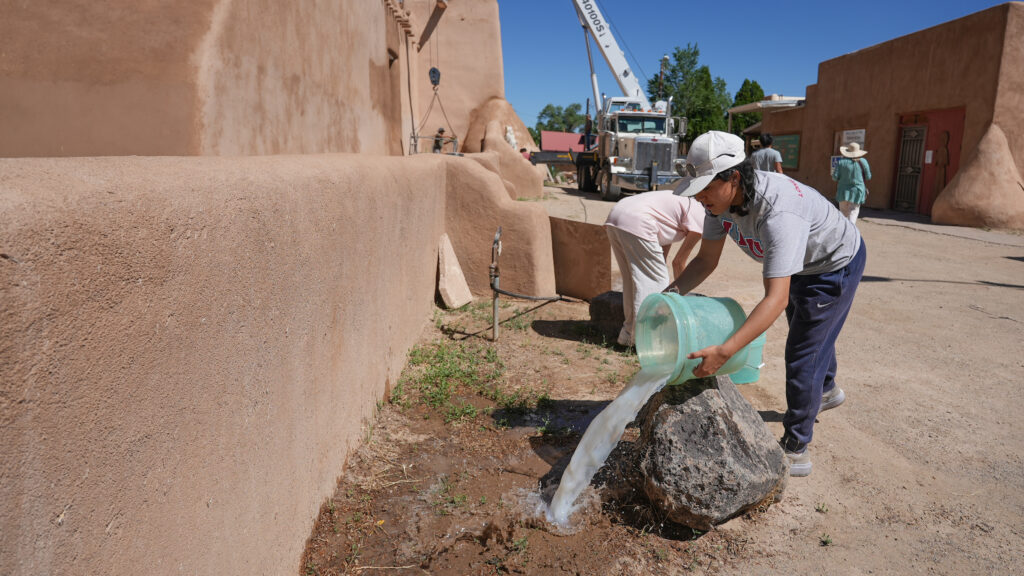
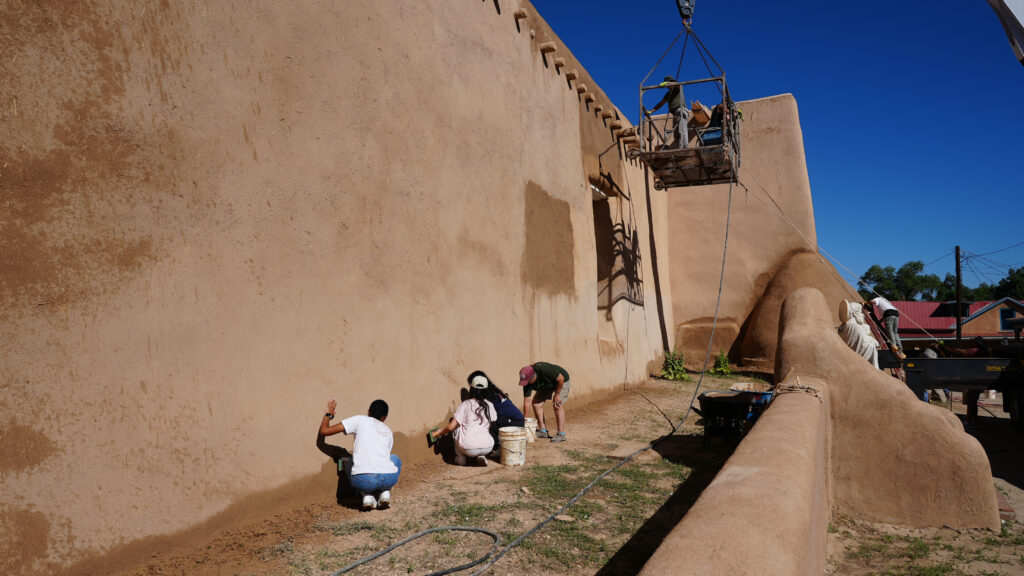
Later that day the teens toured the Taos Pueblo with adobe structures estimated to be over a thousand years old. The tour guide, a young pueblo woman, gave the group a tour of this ancient place and described the history of the Taos Pueblo. It was unsettling to hear about the history of forced conversions to Christianity by the Franciscans and the cruelty that was inflicted on the people of the Taos Pueblo if they didn’t convert to Christianity, but that is their history. Our guide shared with us that the Rio Pueblo de Taos river flows through the Taos Pueblo and originates in the Sangre de Cristo Mountains. The community makes an annual pilgrimage up to the mountain source of the river, on which the Pueblo is dependent for its drinking water.
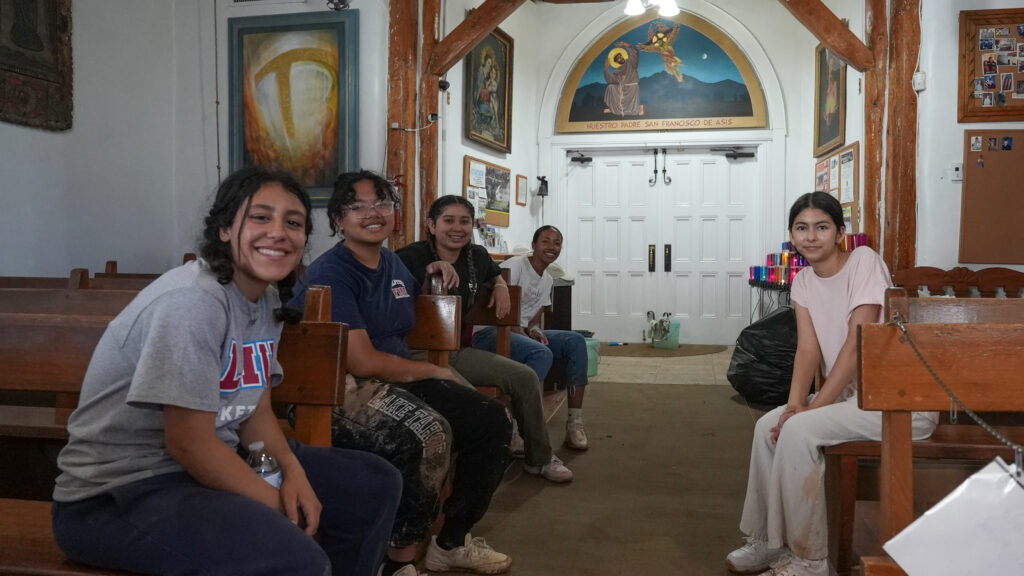
On June 26th we visited the Upaya Zen Monastery in Santa Fe. One of the Buddhist priests showed us a small patch of land, on which they had planted corn on the monastery grounds. He explained that the planting of the corn is preceded by several hours of prayer and that in the local pueblos the prayers can last a day and a half. In the surrounding soil where the corn is planted, beans and squash are also planted and together they are referred to as “the three sisters.” The beans act as a natural fertilizer and add nitrogen to the soil which benefits the growth of the corn and squash. Squash is typically planted between the corn and beans, and its ample leaves serve as a shield blocking heat and retaining soil moisture while suppressing weed growth. The seeds for these plants at the Upaya Zen Monastery were shared by the indigenous people of the Santa Clara Pueblo, a precious gift to the monastery.
After our introduction to the corn we entered the Zendo, which is a spiritual dojo where zazen and sitting meditation are practiced. The sensei taught us about Zen and we were guided through a Zen meditation practice. What was notable is that the practice of Zen is not considered an independent experience, but rather a community experience that takes place in the context of three elements: the Buddha, the dharma (the teaching) and the sangha (the community). These three elements are interconnected and Zen is about meditating within this context and is not considered a solitary endeavor, but a spiritual practice in the context of community.
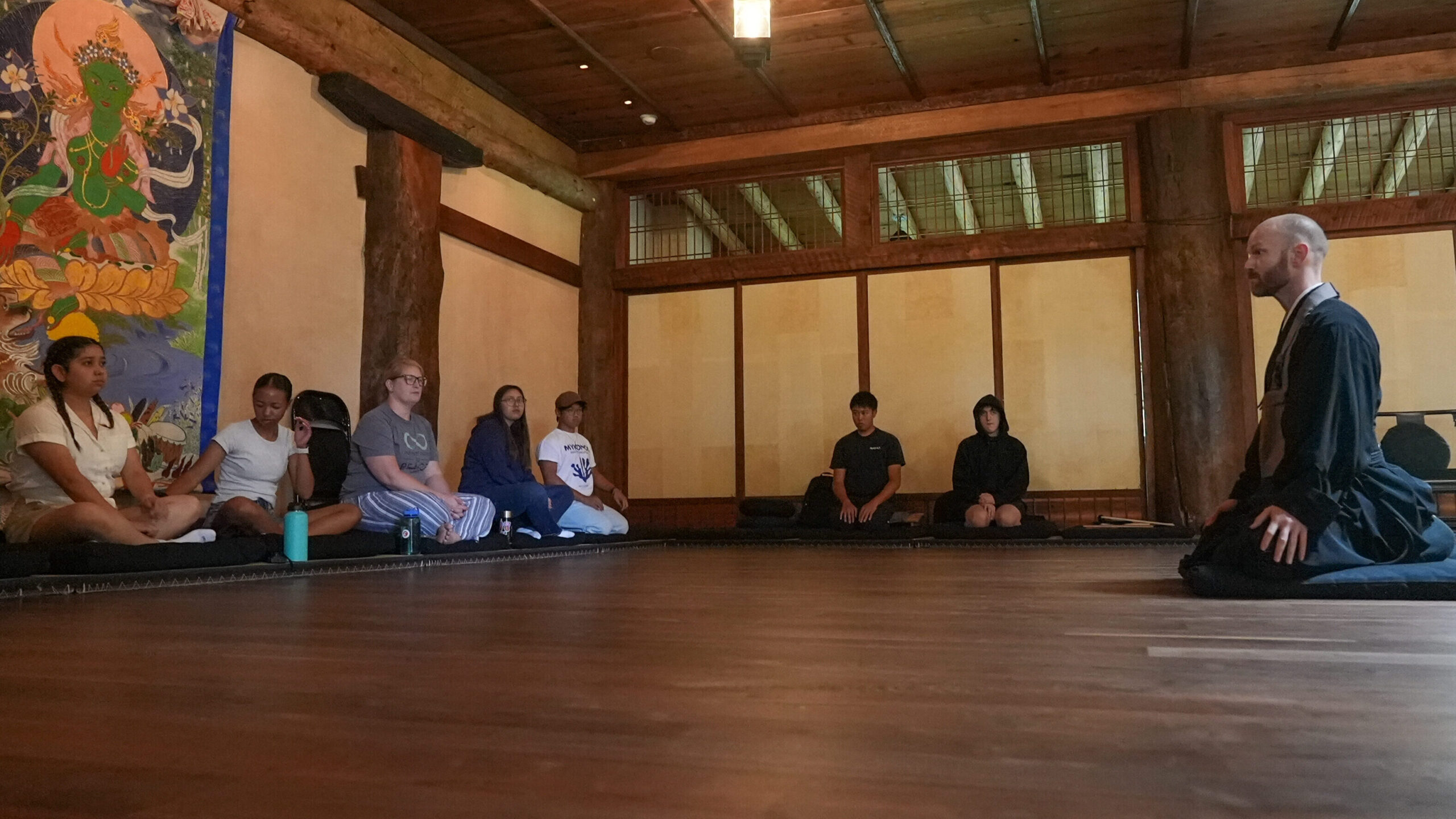
On June 27th we participated in a Prayer Bead workshop facilitated by Tara Trudell (daughter of John Trudell who was a Native American author, poet, actor, musician, and political activist. He was the spokesperson for the Indians of All Tribes’ takeover of Alcatraz beginning in 1969, Wikipedia). Tara’s workshop provided a sacred space for us to participate in a shared personal ceremony of rolling our own prayer beads that enlightened our personal and collective spiritual paths. This was a healing and powerful transference of energy that uplifted our spirits and helped foster kinship amongst us as we explored our values. We embedded the beads with the names of loved ones, our values and hopes for the world. The prayer bead making helped each of us connect to ourselves more deeply and connected us to the world, in which we live in a deeper way.
Following the Prayer Bead workshop, we traveled to the Santa Clara Pueblo, which was built around 1580, to visit with one of the elders, Marian. She described the history of the Tewa people (who live on the Santa Clara Pueblo) and their values. One of the values was about being connected to the land. She shared with us that the land and the people of the pueblo are interconnected and vital to one another and that it is a precious relationship, one of mutual respect. A profoundly troubling story Marian told us was about how the atomic bomb was created on indigenous land in nearby Los Alamos. The destructive purpose of the atomic research done at Los Alamos, on native land, is considered an affront to the respect and interconnectedness the Pueblo people have with the land. It’s like knowing that one’s own sacred space is being used for the development of a weapon of mass destruction.
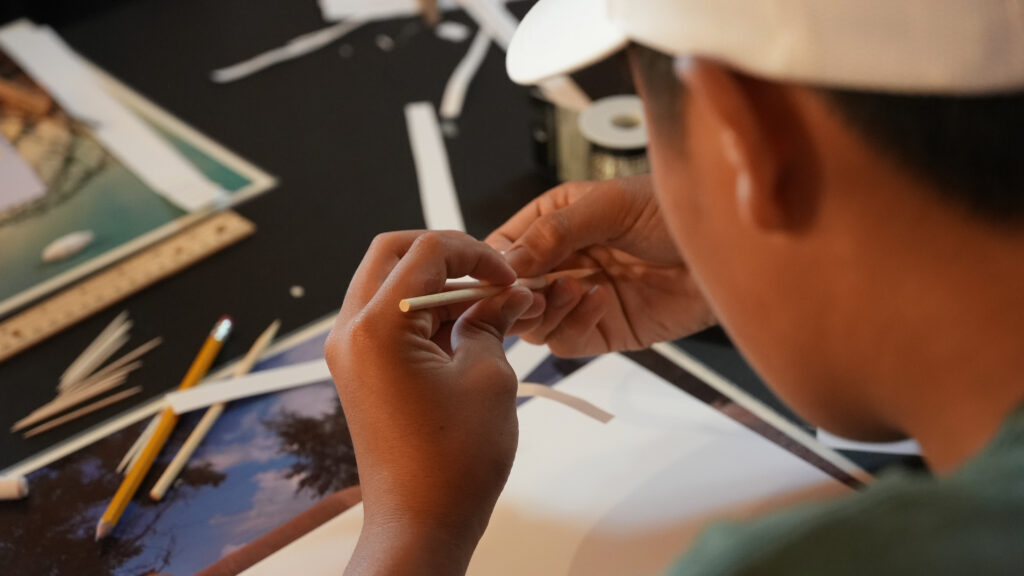
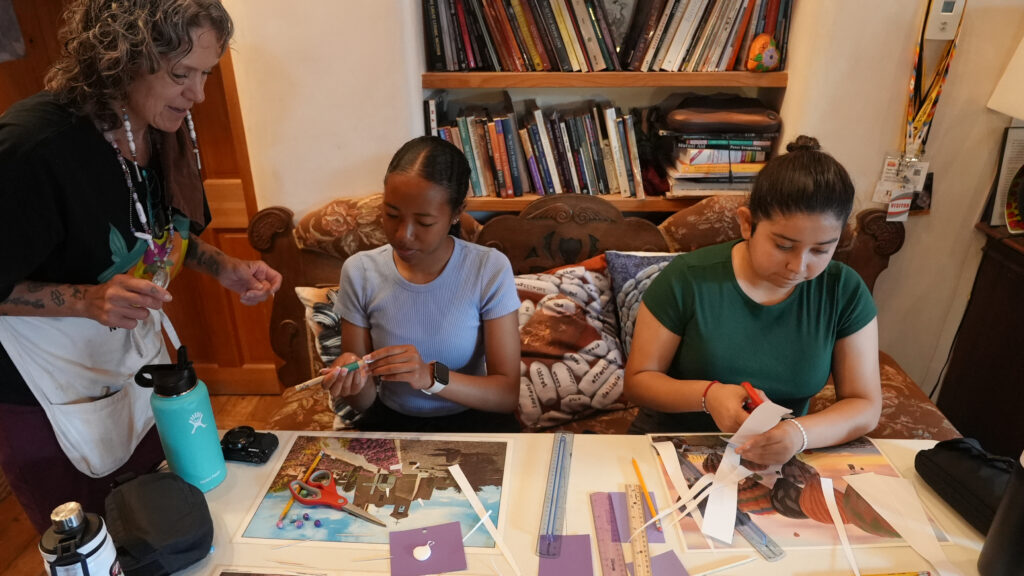
This is just a brief overview of what the participants in the New Mexico Interfaith Program experienced together. The young people and adult chaperones gained a deeper understanding of the values of interdependence, respect for the environment, and the experience of community. We gained a respect and appreciation of the diversity of spiritual communities in New Mexico and we created life-long friendships with one another that transcended our individual faith traditions. It is often said the youth are the future. If these young people are any indication, the future looks promising.
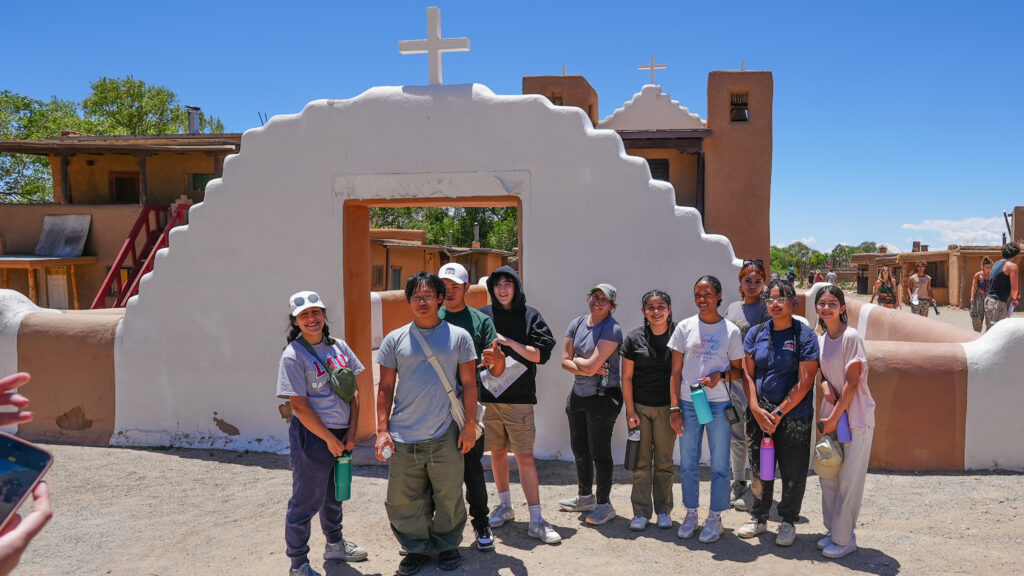
Please enjoy many more photos from New Mexico at this link. You may also find a video, which shows how the teen participants are enjoying their friendship, camaraderie and interfaith experiences at this link.
